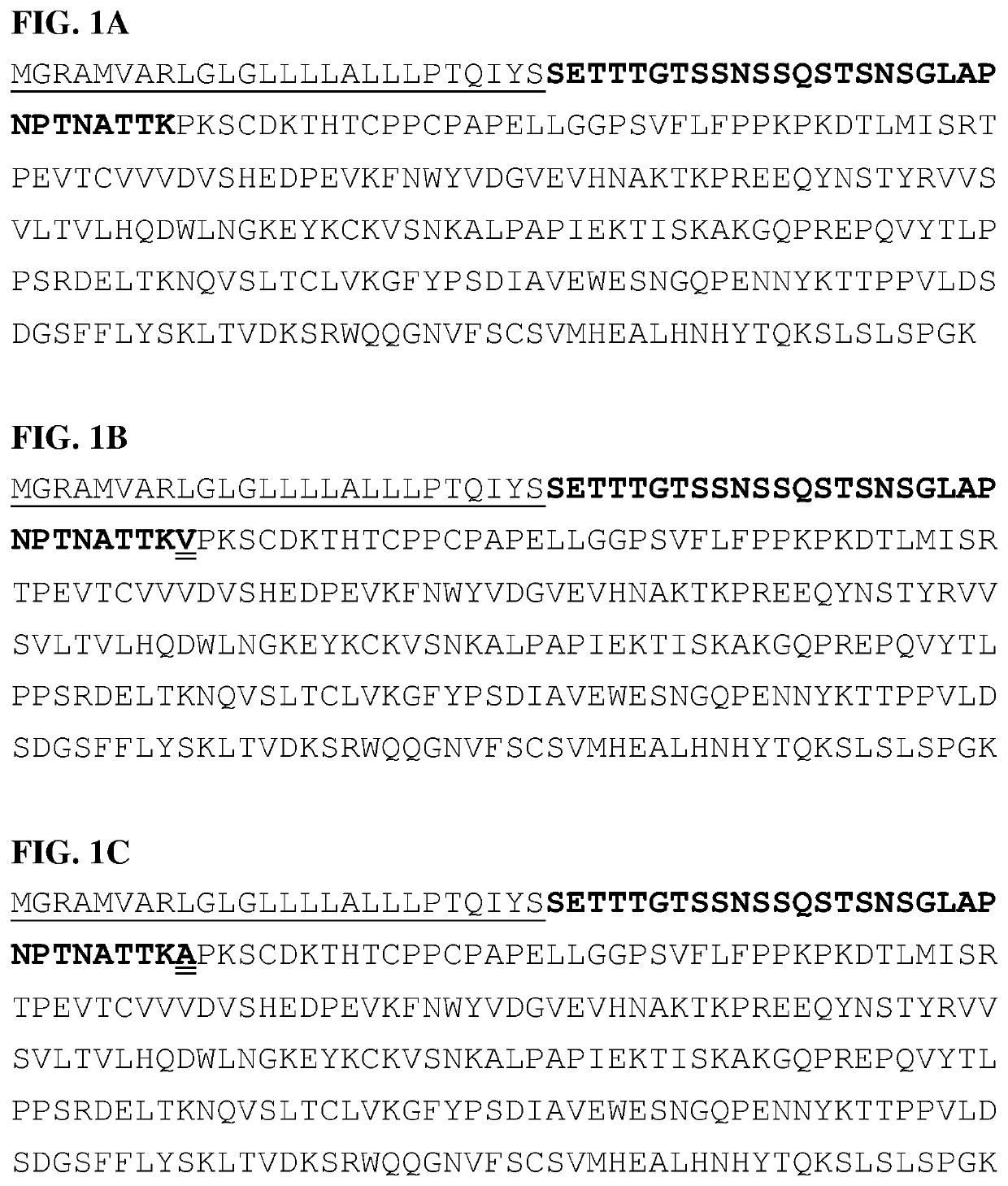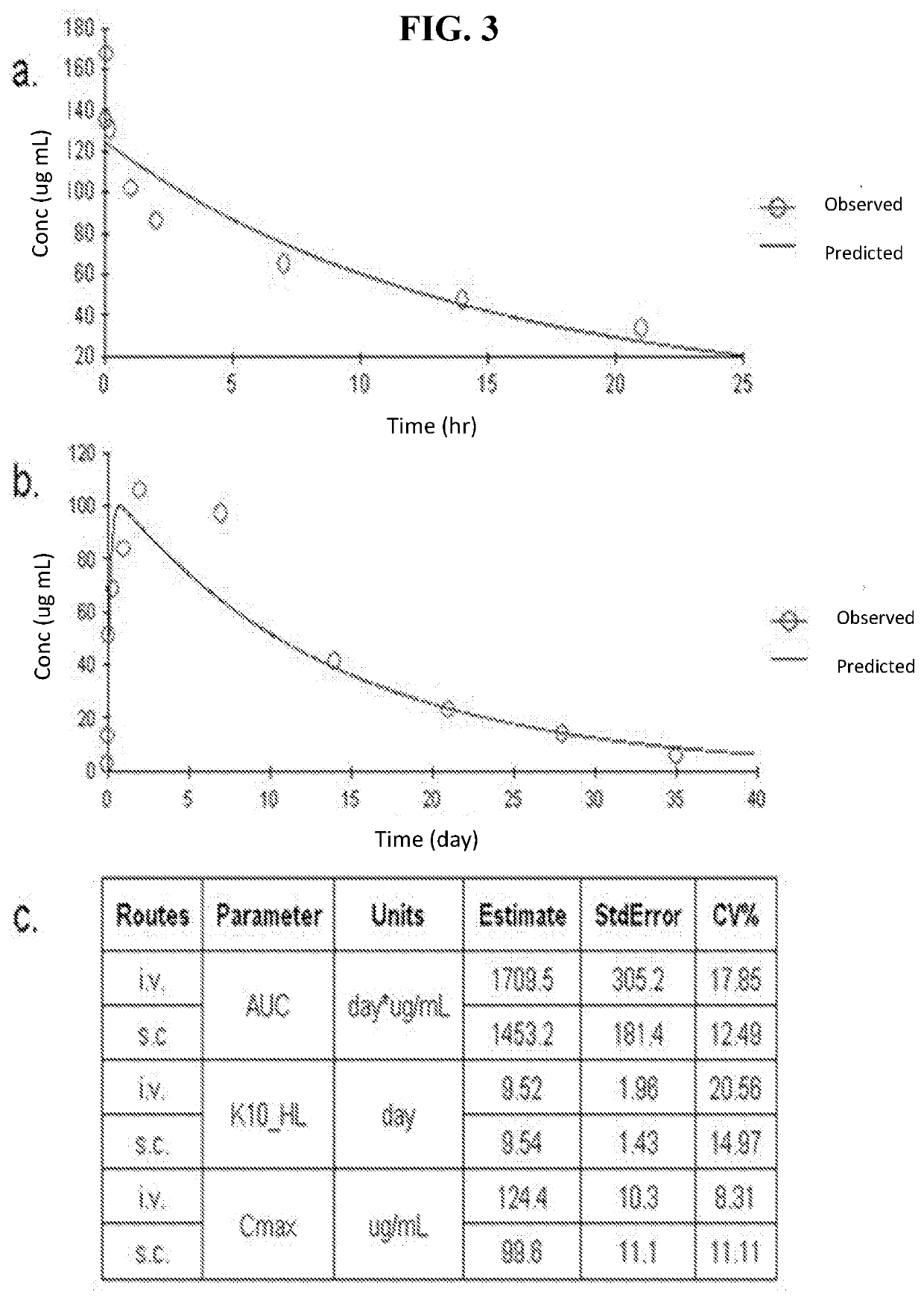Methods of use of soluble cd24 for treating immune related adverse events in cancer therapies
a cancer therapy and immune-related technology, applied in the field of soluble cd24 for treating immune-related adverse events, can solve the problems of inability to tolerate severe autoimmune adverse events, limited effect of solid tumors to date, and inability to fully integrate patients, etc., to achieve the effect of stably integrated
- Summary
- Abstract
- Description
- Claims
- Application Information
AI Technical Summary
Benefits of technology
Problems solved by technology
Method used
Image
Examples
example 1
CD24 Pharmacokinetics in Mice
[0060]1 mg of CD24Fc (CD24Fc) was injected into naïve C57BL / 6 mice and collected blood samples at different timepoints (5 min, 1 hr, 4 hrs, 24 hrs, 48 hrs, 7 days, 14 days and 21 days) with 3 mice in each timepoint. The sera were diluted 1:100 and the levels of CD24Fc was detected using a sandwich ELISA using purified anti-human CD24 (3.3 μg / m1) as the capturing antibody and peroxidase conjugated goat anti-human IgG Fc (5 μg / m1) as the detecting antibodies. As shown in FIG. 3A. The decay curve of CD24Fc revealed a typical biphase decay of the protein. The first biodistribution phase had a half-life of 12.4 hours. The second phase follows a model of first-order elimination from the central compartment. The half-life for the second phase was 9.54 days, which is similar to that of antibodies in vivo. These data suggest that the fusion protein is very stable in the blood stream. In another study in which the fusion protein was injected subcutaneously, an alm...
example 2
CD24-Siglec 10 Interaction in Host Response To Tissue Injuries
[0061]Nearly two decades ago, Matzinger proposed what was popularly called danger theory. In essence, she argued that the immune system is turned on when it senses the dangers in the host. Although the nature of danger was not well defined at the time, it has been determined that necrosis is associated with the release of intracellular components such as HMGB1 and Heat-shock proteins, which were called DAMP, for danger-associated molecular patterns. DAMP were found to promote production of inflammatory cytokines and autoimmune diseases. In animal models, inhibitors of HMGB1 and HSP90 were found to ameliorate RA. The involvement of DAMP raised the prospect that negative regulation for host response to DAMP can be explored for RA therapy.
[0062]Using acetaminophen-induced liver necrosis and ensuring inflammation, it was observed that through interaction Siglec G, CD24 provides a powerful negative regulation for host response...
example 3
CD24 and the Prevention of GvHD
[0064]CD24Fc interacts with HMGB1, Siglec 10 and induces association between Siglec G and SHP-1.
[0065]To measure the interaction between CD24Fc and Siglec 10, we immobilized CD24Fc onto a CHIP and used Biacore to measure the binding of different concentrations of Siglec-10Fc. As shown in FIG. 5A, CD24Fc binds with Siglec 10 with a Kd of 1.6×10−7 M. This is 100-fold higher affinity than the control Fc. The interaction between CD24Fc and HMGB1 was confirmed by pull down experiments using CD24Fc-bound protein G beads followed by Western blot with either anti-IgG or anti-HMGB1. These data demonstrate that CD24Fc, but not Fc, binds to HMGB1 and that this binding is cation-dependent (FIG. 5B). To determine whether CD24Fc is an agonist of Siglec G, the mouse counterpart of human Siglec 10, we stimulated CD24− / − spleen cells with CD24Fc, control Fc or vehicle (PBS) control for 30 minutes. Siglec G was then immunoprecipitated and probed with anti-phospho-tyrosi...
PUM
| Property | Measurement | Unit |
|---|---|---|
| concentration | aaaaa | aaaaa |
| concentration-time curve | aaaaa | aaaaa |
| soluble | aaaaa | aaaaa |
Abstract
Description
Claims
Application Information
 Login to View More
Login to View More - R&D
- Intellectual Property
- Life Sciences
- Materials
- Tech Scout
- Unparalleled Data Quality
- Higher Quality Content
- 60% Fewer Hallucinations
Browse by: Latest US Patents, China's latest patents, Technical Efficacy Thesaurus, Application Domain, Technology Topic, Popular Technical Reports.
© 2025 PatSnap. All rights reserved.Legal|Privacy policy|Modern Slavery Act Transparency Statement|Sitemap|About US| Contact US: help@patsnap.com



